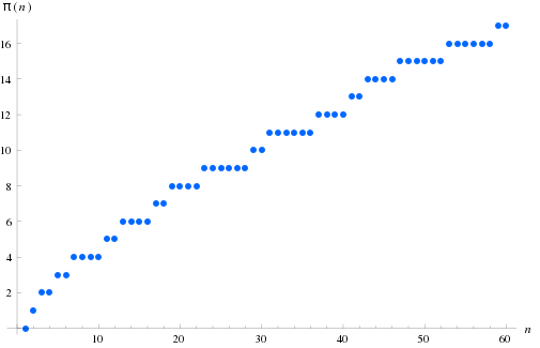
GAPCOIN
Launched: Tue Oct 21 2014

Launched: Tue Oct 21 2014
Gapcoin is a new prime number based p2p cryptocurrency,
which tries to eliminate the sticking points of other
scientific currencies like Primecoin or Riecoin.
It's a fork of Satoshi Nakamotos Bitcoin, a decentralized
payment system which is independent of banks, governments
and other centralized regulators.
With Gapcoin, you will be able to anonymously send
money around the globe in no time.
The big improvement in comparison to Bitcoin is that instead of burning electricity for its own sake, Gapcoins Proof of Work function actually does useful work by searching for large prime gaps.
A PoW algorithm has to fit two specifications:
Verifying a prime gap is easy, you only have to check every number between the start and the end to be composite.
Calculating is harder, much harder!
Large prime gaps occur a lot lesser than smaller ones. According to
E. Westzynthius,
in e^n prime gaps there will be one gap that is n times greater than the average prime gap.
Not exactly. The average length of a prime gap with the starting
prime p, is log(p), which means that the average prime gap size
increases with lager primes.
Then, instead of the pure length, we use the merit of the prime gap,
which is the ratio of the gap's size to the average gap size.
Let p be the prime starting a prime gap, then m = gapsize/log(p) will be the merit of this prime gap.
Also a pseudo random number is calculated from p to provide finer difficulty adjustment.
Let rand(p) be a pseudo random function with
0 < rand(p) < 1
Then, for a prime gap starting at prime p with size s, the
difficulty will be s/log(p) + 2/log(p) * rand(p), where 2/log(p)
is the average distance between a gap of size s and s + 2
(the next greater gap) in the proximity of p.
When it actually comes to mining, there are two additional fields
added to the Blockheader, named “shift” and “adder”.
We will calculate the prime p as sha256(Blockheader) * 2^shift + adder.
As an additional criterion the adder has to be smaller
than 2^shift to avoid that the PoW could be reused.
We already broke 544 records of first known occurrence prime gaps.
Also, if the difficulty reaches 35.4245, every block will be a new world record: Top 20 Prime Gaps
Prime numbers are interesting for lots of mathematicians around the globe, and they're also important to every day cryptography (see RSA).
Researches about prime gaps could not only lead to new breakthroughs in the bounded gap, it may also help proving the Twin Prime Conjecture and maybe even the millennium problem, the Riemann hypothesis. Who knows?
Well, the “G” was already taken by Goldcoin, so that was no possibility.
But the formula π(x) is known as the prime-counting function,
which graph shows the prime gap distribution as well.
That's why the “π” fits the logo perfectly. (image Wikipedia)

Windows 32 and 64 bit binaries
[GAP] GapCoinh1amMiRq56WunADY4yztmNBMaYr
[BTC] 1Dv8e3WfhuiBhgNJo6RbvU1nXzF7goifHS
[LTC] LQRFrMsiFQAuC8rnns9wt9cE2VdqhX9gSc
[XPM] AKS71YssSJTP7J1CFDzysr5ijnyyvioekg
[RIC] RYE7GyMYu2VZs9Y2dkXTuVf4TtZ8YTExJK